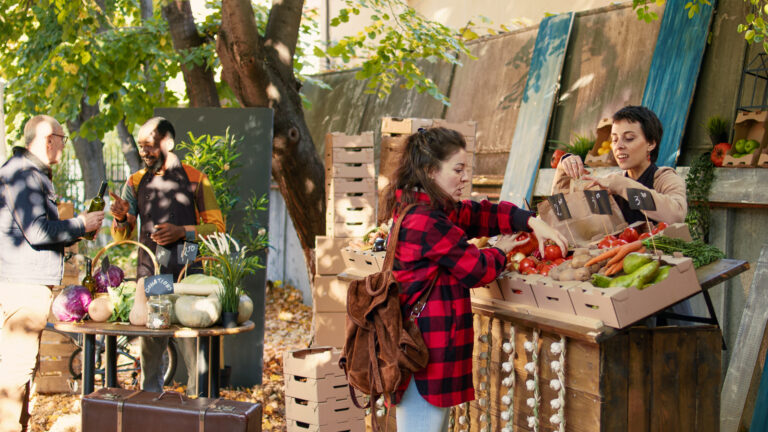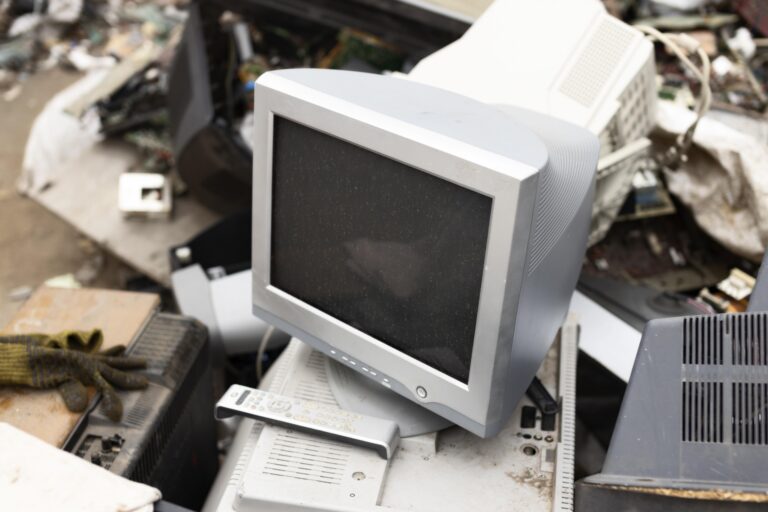Theme
Fast fashion
Activity Duration
3 hours
Group Size
10-20 youngsters
Objectives
- Identify, learn and apply creative and artistic modes of expression to
reframe one’s position and feelings with respect to the issue of
sustainability - Provide skills, abilities and motivation needed to deal with climate
change as active members of a community - promote awareness about the fast fashion industry
- promote collaboration among students in the creative realisation of the
final product
Description
This activity aims to raise students’ awareness about excessive clothing consumption through a practical and creative experience: creating a “mega-dress” by sewing together recycled clothes. Students are taught how to sew and are asked to sew together recycled clothes, one next to the other, to create a mega-dress that represents excessive clothing consumption.
Materials/Tools
• Used/recycled clothes: Provided by the students themselves or collected
in advance. It’s advisable to have a variety of fabrics, colors, and cuts.
• Sewing machines: One for each group of students or, if not available in
sufficient numbers, an adequate number for rotation OR Needles and
threads: In various colors to match the fabrics.
• Fabric scissors.
• Sewing pins.
• Measuring tape.
• Tailor’s chalk (optional, for marking fabrics).
• Iron and ironing board (optional, for preparing fabrics).
• Projector and computer (for the introductory phase).
• Note-taking materials (notebooks, pens).
• Flip charts or whiteboards for discussion and brainstorming.
Space (indoor, outdoor,
settings…)
indoor – Classroom with desks joined to form work tables
Structures/steps (timing)
Introduction and Preparation (60 minutes)
1. Introduction to the Topic (15 minutes)
Brief interactive presentation on the topic of excessive clothing
consumption (fast fashion, environmental and social impact, garment life
cycle).
Guided discussion: “How many clothes do you have in your wardrobe that
you no longer wear? Where do the clothes we throw away end up?”
2. The “Mega-Dress” Concept (10 minutes)
Explanation of the practical project: sewing together recycled clothing
items to create a single, giant dress that symbolizes accumulation and
waste emphasizing that this isn’t about creating an aesthetically perfect
garment, but a textile sculpture that conveys a message.
Examples of similar artworks or installations, if available, to inspire
students.
3. Introduction to Basic Sewing (30 minutes)
Guided practice: Each student or small group practices basic stitches on
scraps provided by the teacher or from clothing cut-offs.
4. Organization and Initial Brainstorming (5 minutes)
Divide students into small groups (3-4 people).
Each group start thinking about how they would like to assemble the items
they brought, considering the composition of the “mega-dress”. A detailed
plan isn’t necessary, but an initial general idea is good.
Garment Preparation and Beginning to Sew (60 minutes)
1. Garment Preparation (20 minutes)
Each group takes the recycled clothes available to them.
Garment analysis: Students decide which parts of the clothes to use
(sleeves, bodices, pant legs, etc.).
Cutting and preparation: Encourage students to cut the garments into
more manageable sections or to unpick some parts to open and atten
them, making them easier to sew.
Organization: Groups should start arranging the fabric pieces side-by-side
on the oor or a large table to visualize how they will connect.
2. Beginning to Sew: Joining the First Pieces (40 minutes)
Groups begin to sew the rst fabric pieces together.
Group members help each other—one sews, another holds the fabric or
cuts, another prepares the next pieces.
Continued Sewing and Final Re ection (60 minutes)
1. Continued Sewing (40 minutes)
Groups continue with the assembly of their segments of the mega-dress.
Depending on the class size and quantity of clothes, a decision can be made
whether each group creates a separate section to be joined at the end, or if
everyone works on a single, large common piece.
2. Final Assembly (10 minutes)
If groups have worked on separate sections, this is the time to join them to
form the nal “mega-dress.” The teacher can facilitate this phase or
designate one or two groups for the nal joining.
Display the mega-dress in a visible area for the nal discussion.
3. Discussion and Final Reflection (10 minutes)
Collective observation: Ask students to observe the completed “mega-
dress.” “What does this mass of clothes suggest to you? What feelings
does it evoke?”
Guided reflection: “What message does this ‘mega-dress’ convey about
clothing consumption?””Was it easier or harder to sew these items
together than you thought?” “What have you learned about recycling and
the value of clothes?”
“What small actions can we take to reduce our impact?”
Evaluation System/Tools
The educator’s assessment can be conducted using various tools and
methods:
– observation grids for the di erent stages of group work,
– evaluation of the final product
– self-assessment tools and questionnaires for the
youngsters or
– through the administration of final questionnaires to assess
knowledges acquired



